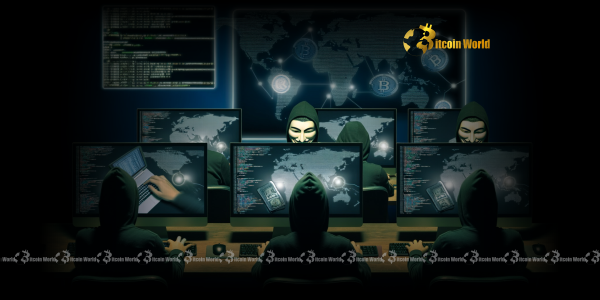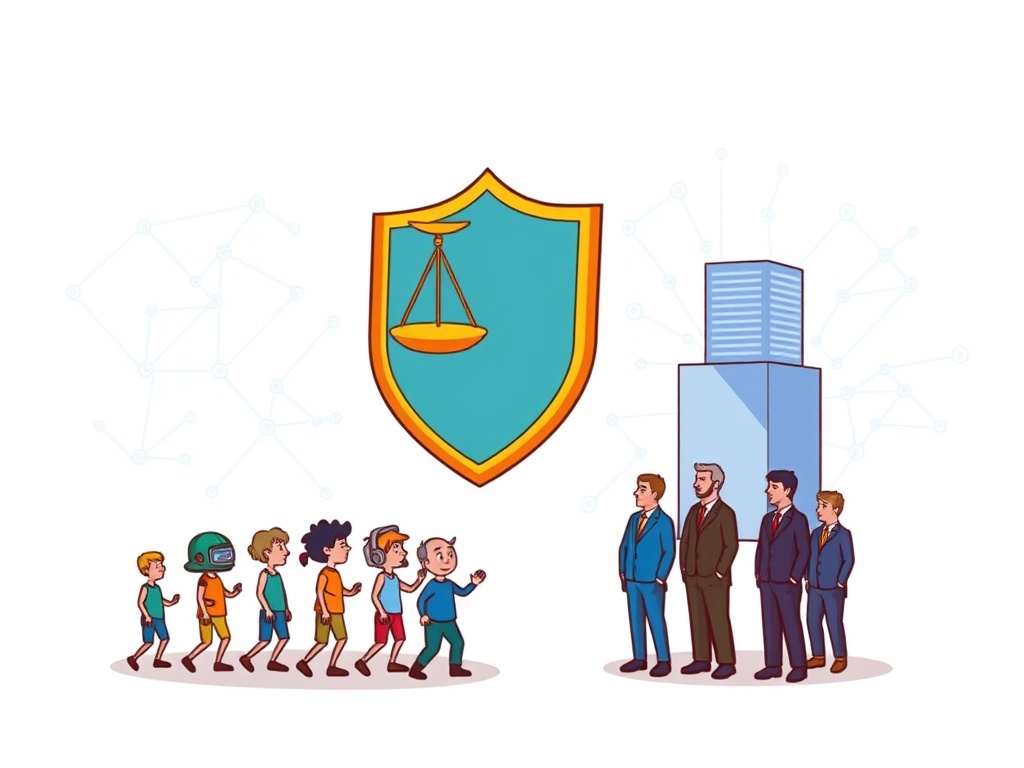BitcoinWorld

North Korean Hackers: The Alarming Threat Infiltrating Crypto Jobs
The cryptocurrency world, often lauded for its innovation and decentralization, faces a pervasive and insidious threat: state-sponsored infiltration. Recent revelations from the renowned on-chain investigator ZachXBT have sent ripples through the industry, exposing a shocking scale of suspected North Korean hackers embedded within legitimate crypto companies globally. This isn’t just about external attacks; it’s about a deep-seated risk from within, posing an unprecedented challenge to the very foundation of trust and security in the digital asset space.
The Alarming Scale of North Korean Hackers’ Infiltration: What ZachXBT Uncovered
Imagine a workforce operating in the shadows, not to build, but to exploit. That’s the unsettling picture painted by ZachXBT’s meticulous ZachXBT investigation. His findings suggest that a staggering 345 to 920 individuals, believed to be operatives from North Korea, have successfully secured IT and development roles across the global crypto landscape. These aren’t just low-level employees; they are often positioned in critical roles, gaining insider access to sensitive systems and proprietary information.
The financial scale of this operation is equally concerning. These infiltrators have allegedly siphoned over $16.5 million in salaries, a significant sum that likely fuels the illicit activities of the North Korean regime. What makes this even more alarming is their modus operandi: many operatives are reported to hold multiple jobs simultaneously. This tactic not only maximizes their earnings but also amplifies their potential for gaining crucial insider access across various platforms, creating a web of vulnerabilities that is difficult to untangle.
This systematic infiltration highlights a critical vulnerability in the hiring practices of many crypto firms. While the industry prides itself on its innovative spirit, the rush to scale and the global nature of remote work have inadvertently created fertile ground for these sophisticated, state-sponsored actors. The ease with which these individuals can secure positions, often under false pretenses, underscores a pressing need for a re-evaluation of current security protocols.
Why Are Crypto Jobs a Prime Target for Lazarus Group and Other Threats?
The cryptocurrency sector, with its rapid transactions, global reach, and often pseudonymous nature, presents an irresistible target for nation-states under stringent international sanctions. For groups like the infamous Lazarus Group, a cybercrime organization linked to North Korea, crypto is not just a digital asset; it’s a lifeline. The funds acquired through hacks and infiltrations are reportedly channeled into financing the regime’s weapons of mass destruction programs, making every successful breach a direct contribution to a dangerous global threat.
The allure of crypto jobs for these operatives is multi-faceted:
- Sanctions Evasion: Traditional financial systems are heavily regulated, making it difficult for sanctioned entities to move funds. Cryptocurrencies offer a less scrutinized avenue.
- High Value Targets: Decentralized finance (DeFi) protocols, exchanges, and crypto projects often hold vast sums of digital assets, making them lucrative targets for theft.
- Insider Access: Gaining employment within a crypto firm provides a direct pipeline to internal systems, private keys, intellectual property, and user data, facilitating more sophisticated and damaging attacks than external hacking attempts.
- Global and Remote Nature: The distributed and often remote nature of crypto development and operations makes it easier for operatives to hide their true locations and identities.
The increasing frequency of DeFi breaches tied to North Korean entities underscores the severity of this threat. These aren’t just opportunistic individual hackers; they are part of a coordinated, well-funded, and highly motivated state apparatus. Their goal isn’t just financial gain; it’s strategic resource acquisition, making them a unique and dangerous adversary for the entire crypto ecosystem.
Unmasking the Threat: Identifying Red Flags in Crypto Security
While the sophistication of these state-sponsored infiltrators is high, ZachXBT’s findings highlight that even advanced threats leave traces. One of the most critical takeaways for crypto firms is the importance of vigilance and the ability to identify common red flags. Many of these operatives, despite their technical skills, exhibit inconsistencies that, if recognized, could prevent significant breaches.
Common red flags that could help identify these infiltrators include:
- Inconsistent Digital Footprints: Operatives often struggle to maintain a consistent online persona across various platforms. Look for discrepancies in their professional history, social media activity, or even coding styles across different projects.
- Poor Job Performance (in some cases): Surprisingly, some infiltrators prioritize gaining access over actual productivity. Their performance might be subpar, or they might show an unusual disinterest in tasks not related to their infiltration objectives.
- Unusual Working Hours or Patterns: Due to their true location or the need to juggle multiple jobs, operatives might exhibit strange working hours, often preferring to work when others are offline, or being unavailable during standard team meetings.
- Reluctance to Engage Visually: A strong aversion to video calls, or always using a virtual background that obscures their surroundings, could be a sign.
- Over-Eagerness for Sensitive Access: An employee who pushes too hard, too quickly, for access to critical systems, private keys, or highly sensitive data, especially beyond their immediate job requirements.
- Suspicious Network Activity: Unusual login locations, attempts to access restricted network segments, or attempts to download large amounts of data.
- Social Engineering Attempts: Testing colleagues for information, trying to gain trust to extract credentials, or probing for vulnerabilities in team communication channels.
The report also points to weak KYC/AML (Know Your Customer/Anti-Money Laundering) practices at some firms as a contributing factor. While KYC/AML is often associated with financial transactions, robust identity verification during the hiring process is equally crucial. A lax approach here creates an open door for malicious actors to walk right in.
Here’s a table summarizing key red flags for easier identification:
| Category | Red Flag | Description |
|---|---|---|
| Identity & Background | Inconsistent Digital Footprint | Discrepancies in online profiles, employment history, or professional networks. |
| Behavioral | Unusual Work Patterns | Working odd hours, reluctance for real-time collaboration (e.g., video calls). |
| Performance | Poor Job Performance | Lack of productivity or disinterest in tasks not related to potential infiltration goals. |
| Access Requests | Over-Eagerness for Sensitive Access | Repeatedly requesting access to systems or data beyond their immediate role. |
| Network Activity | Suspicious Login/Activity | Logins from unusual geographic locations, attempts to access restricted areas. |
Protecting Your Firm: Actionable Insights for Enhanced Crypto Security
The insights from ZachXBT’s investigation serve as a stark warning but also a crucial call to action. Strengthening crypto security is no longer just about defending against external attacks; it requires a robust internal defense strategy. Here are actionable steps crypto firms can take to mitigate the risk of infiltration by state-sponsored actors:
- Implement Enhanced Background Checks: Go beyond standard reference checks. Utilize specialized services for thorough background investigations, including digital footprint analysis, verifying past employment, and checking for red flags associated with known threat actor profiles. For remote hires, this is even more critical.
- Strengthen KYC/AML During Hiring: Apply rigorous identity verification processes not just for users, but for employees too. This includes verifying government-issued IDs, proof of address, and potentially biometric verification where legally permissible.
- Adopt a Zero-Trust Security Model: Assume no user or device, whether inside or outside the network, should be automatically trusted. Implement strict access controls, continuous verification, and least-privilege access for all employees.
- Multi-Factor Authentication (MFA) Everywhere: Enforce MFA for all internal systems, development environments, and sensitive accounts. Hardware security keys (e.g., YubiKey) offer a higher level of protection than SMS-based MFA.
- Regular Security Audits and Penetration Testing: Conduct frequent internal and external security audits. Engage ethical hackers to perform penetration tests to identify vulnerabilities that could be exploited by insiders or external attackers.
- Employee Security Awareness Training: Educate all employees, especially developers and IT staff, about social engineering tactics, phishing attempts, and the specific threat posed by state-sponsored actors. Foster a culture of security vigilance.
- Network Monitoring and Anomaly Detection: Deploy advanced network monitoring tools to detect unusual login patterns, unauthorized access attempts, data exfiltration, or any activity that deviates from normal behavior. AI-powered tools can be particularly effective here.
- Segregation of Duties and Access Controls: Limit access to critical systems and sensitive data based on the principle of least privilege. No single employee should have unchecked access to all critical components. Implement multi-signature requirements for key operations.
- Incident Response Plan: Develop and regularly test a comprehensive incident response plan. Knowing how to react quickly and effectively to a suspected breach can significantly minimize damage.
- Collaborate with Security Experts and Law Enforcement: Engage with cybersecurity firms specializing in nation-state threats and cooperate with law enforcement agencies when suspicious activity is detected. Information sharing within the industry can also help identify emerging threats.
The Broader Implications for the Crypto Ecosystem
The infiltration of North Korean hackers into crypto firms extends far beyond individual companies. It casts a long shadow over the entire industry, impacting its reputation, regulatory landscape, and ultimately, its mainstream adoption. Each successful breach, whether through external attack or insider threat, erodes trust. For an industry that thrives on trust, this is a critical challenge.
Regulators worldwide are already scrutinizing the crypto space more closely. Incidents involving state-sponsored actors will undoubtedly lead to increased pressure for stricter compliance, more stringent KYC/AML requirements, and potentially new legislation aimed at bolstering cybersecurity within crypto firms. While some in the crypto community might resist increased regulation, a proactive approach to security could demonstrate the industry’s commitment to self-governance and responsible growth.
Moreover, these threats impede innovation. Resources that could be channeled into developing groundbreaking applications and technologies are instead diverted to combating sophisticated cyber warfare. The fear of infiltration can also deter talent and institutional investment, hindering the overall maturation of the crypto ecosystem.
Conclusion: A Call for Collective Vigilance in the Face of Cyber Warfare
ZachXBT’s groundbreaking ZachXBT investigation into North Korean infiltration is a sobering reminder that the digital frontier is also a battlefield. The presence of hundreds of suspected North Korean operatives within crypto firms underscores a profound and evolving threat. It’s a clear signal that the industry must move beyond reactive measures and embrace a proactive, comprehensive approach to crypto security.
Protecting the integrity of the crypto space requires collective action. From robust hiring practices and continuous employee training to advanced security protocols and international collaboration, every entity within the ecosystem has a role to play. By understanding the tactics of groups like the Lazarus Group and implementing stringent defenses, we can build a more resilient and trustworthy digital future, safeguarding not just assets, but the very promise of decentralized finance from the insidious threat of state-sponsored cyber warfare.
To learn more about the latest crypto security trends and how to protect against DeFi breaches, explore our article on key developments shaping the digital asset landscape and its security posture.
This post North Korean Hackers: The Alarming Threat Infiltrating Crypto Jobs first appeared on BitcoinWorld and is written by Editorial Team





